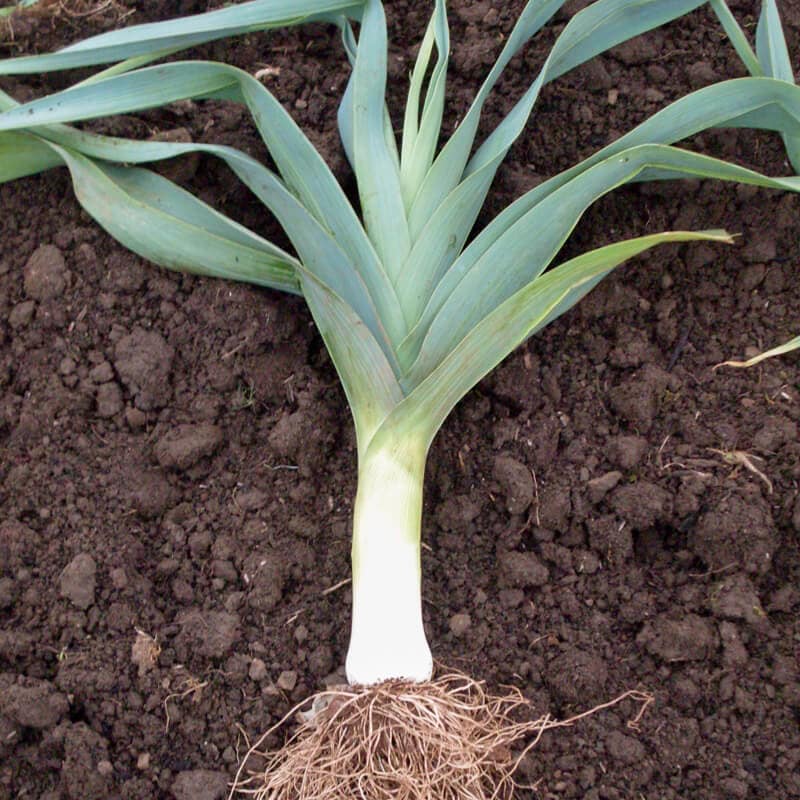Leek, Pancho (Organic)
Allium ampeloprasum.
Excellent, quick maturing summer leek. Blue-green color with beautiful broad leaves. Pancho Leek is known for its speed, as it can be sown in March and harvested in August. A great variety for organic farmers that was nearly lost from the trade when hybrid leek seed arrived. It is just as good, if not better than the hybrids in every way. The main reason for hybrid leeks is the money that corporations can make by charging more for the seed. Not a traditional winter leek but it can overwinter fine in our part of Oregon.
Sow indoors in flats with good potting soil February through April. Transplant into the garden April through June, once plants are at least the size of a No. 2 pencil lead. Space 6” in rows that are 1’ apart. Leeks benefit from frequent watering and shallow cultivation. Harvest as needed throughout autumn and winter.
Seed Saving
To save seed, leave 20 or more plants in the ground through the second spring and summer. Large, beautiful, globe shaped flowers attract pollinators. Isolate from other leeks by at least ½ mile.




Marietta –
Where did you grow this variety? Oregon
The Pancho Leek takes the prize for the ultimate survivor in tender edibility more than one year after its planting. I am currently planting this year’s bed of leeks (mid-March), while still pulling up last year’s to use in the kitchen.
My most successful cultivation method has been to start seeds indoors, under lights, pretty tightly seeded. I give them about a month head-start before hardening them off. In a prepared bed, I just sink the handle of my rake down four or five inches, then I drop the separated seedlings down into the holes, letting the rains cover their roots little by little.
This is a really low-maintenance vegetable that will feed you all year long. They overwintered with no cover or special attention. The green tops make a nice addition to the stock pot, too, so freeze them instead of throwing the on the compost.
Upvote if this was helpful (2) Downvote if this was not helpful (0) Watch Unwatch Flag for removal
cynara c (verified owner) –
Where did you grow this variety? Washington
I sowed these indoors in mid-March last year and transplanted in mid-late April into my Seattle garden. I suppose I could have harvested some in August, but they remained quite small, so in my experience they didn’t live up to the timing described here. Otherwise, I’d give them five stars. At present, mid-April one year after transplanting, we are harvesting these and the Verdonnet. Lots of variation in size, but plenty of large, gorgeous, tasty leeks that had no apparent problems whatsoever and overwintered fantastically. Also very easy maintenance-wise. I sidedressed a couple of times and started to hill, but after reading Adaptive’s winter gardening guide I stopped hilling in the early fall. This year (the starts are in our bright southern windows as I write) I am going to experiment and hill some of the leeks and see if there is any difference in the length of the white shafts. This and the Verdonnet have me hooked on leeks in the garden.
Upvote if this was helpful (0) Downvote if this was not helpful (0) Watch Unwatch Flag for removal